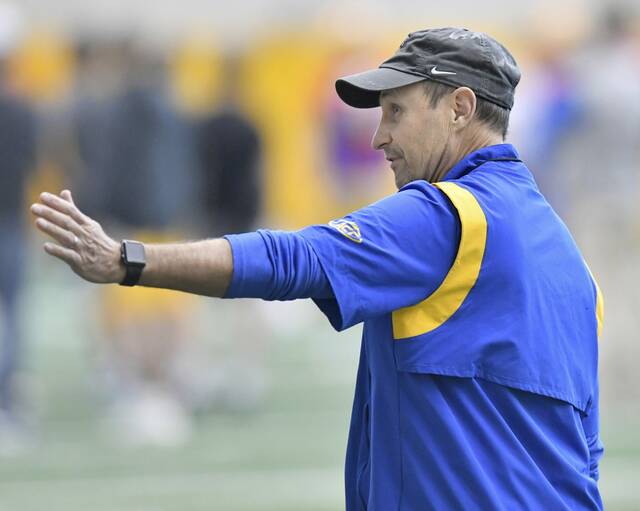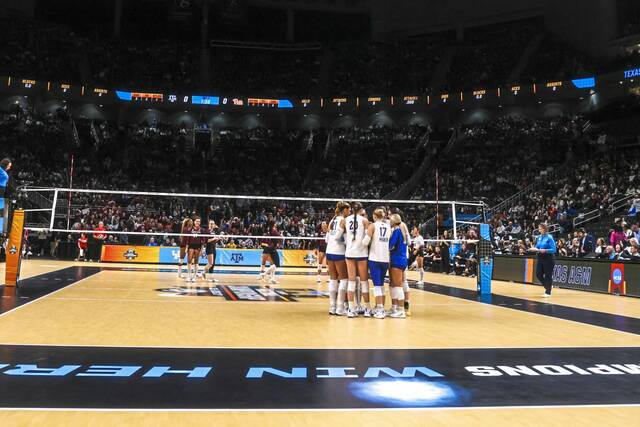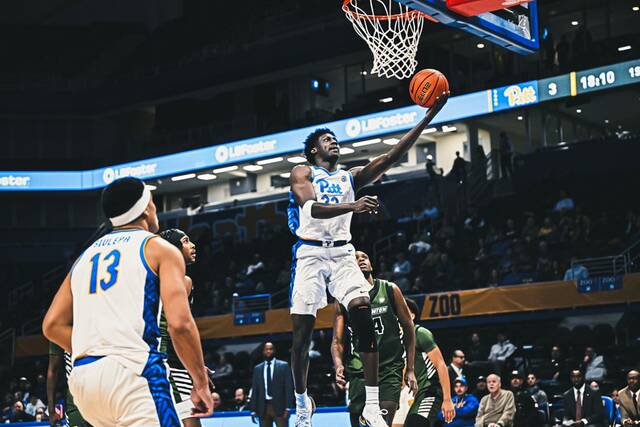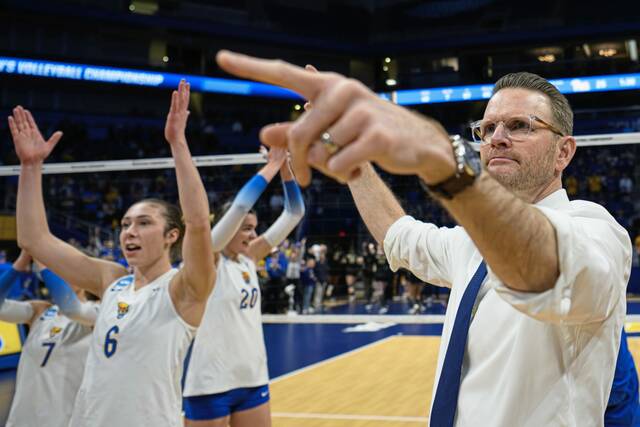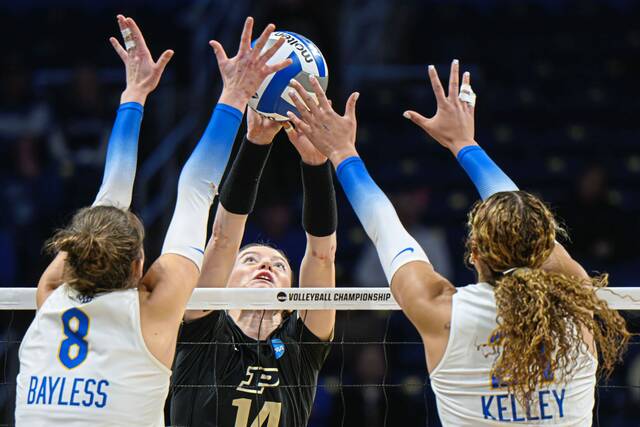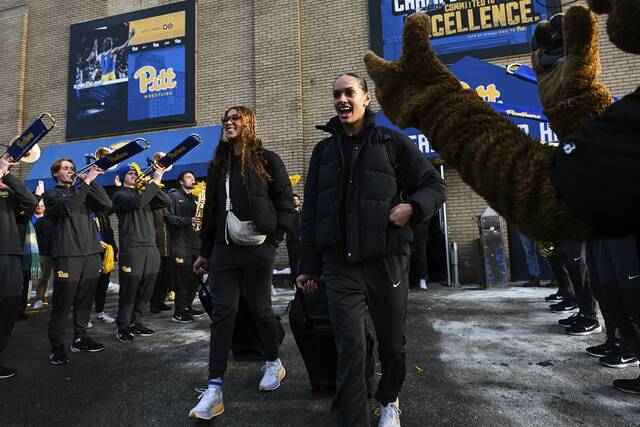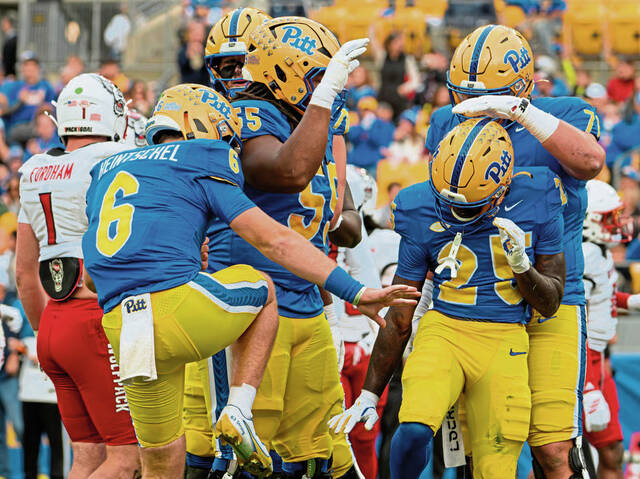Before every practice, Pitt coach Pat Narduzzi gathers his team in a circle for a few moments of bonding.
The coach will speak in his singularly defiant tone, challenging players to participate with a purpose. Players contribute words of encouragement, too.
Just before they disperse to different areas of the field, they end with a staccato burst, emphasizing their ultimate goal for the season. For years, the shout was “ACC champs.” With that goal met in 2021, the chant has changed to “national championship.”
The 2022-23 College Football Playoff final four is the goal — as it should be — for any school coming off a Power 5 title. But Pitt defensive coordinator Randy Bates mentioned this week how close the team came to the ‘21 playoff.
His remarks stem from an affinity for a relatively new football metric called Havoc Defense. It’s a team’s total number of tackles for a loss, interceptions, pass breakups and forced fumbles divided by the opponent’s snaps.
Pitt recorded 179 of those plays last season, which computes to a little better than 18%. The best defenses in the nation reach or surpass 20%. So Pitt was about a havoc play or two per game short of a 13-0 record.
In the three-point loss to Western Michigan, Pitt allowed a third-down conversion and a 34-yard run while the Broncos were running out the clock in the fourth quarter.
Miami prevailed by four points against Pitt after an 18-yard completion by quarterback Tyler Van Dyke from the 1 and a third-and-4 conversion late in the game.
Bates’ point is that one or two more strip sacks, third-down stops or turnovers — anything at anytime that changes the direction of the game — could have altered the outcome. The failure to make those plays can frustrate a coach at the end of a close game.
“Had we been No. 1 in the country in havoc defense, we believe we would have been in the final four,” he said. “That’s our goal, to be the No. 1 havoc defense in the country.”
That’s an ambitious undertaking that will need Pitt’s best players — seven starters return on defense — making big plays at crucial moments. And, perhaps, a couple of well-timed gambles.
“We talk a lot about risk and reward,” Bates said. “As you get to be a better football player, as you get to be more trustworthy, we give you more leeway to make plays.
“That’s what practice is for, to learn when you take that chance and make a play and when you cannot.”
He said the best players “get a little more leeway to be football players.”
“At the end of the day, the object is to make a play,” Bates said. “In the defenses that I’ve coached in the past (before Pitt), your job was to fill that gap.”
But Bates said ultimate success takes more than that relatively simple task of filling a hole.
“The way I look at it, our job is to bring down the guy with the football,” he said. “Sometimes, I would say we’re a little more gray (off the grid) than we are black and white with our defense. Once in while, it hurts you, and you have to learn from that. You have to know when not to make that decision.
“The game of football is not a black and white game, in my opinion. If you can take a chance in the scheme of our defense, we want them to do that.”
Meanwhile, Bates also has a unique way of looking at missed tackles.
“We don’t grade them down on missing tackles. Most people do,” he said. “We grade them down on the passive missed tackles.
“You go and you miss a tackle, but the running back or the wideout has to stop and readjust, then we expect the other 10 people to get there. If they don’t, then it’s on those guys.
“If you go up and stop and we let the guy run around us, that would be as passive missed tackle. That’s not the way we want to play.”
Another concept drawing much attention in coaches’ meetings is the matter of in-game shifts in philosophy.
With several important players returning — such as safeties Erick Hallett and Brandon Hill, linebacker SirVocea Dennis and celebrated defensive tackle Calijah Kancey — Bates will be comfortable making changes as the game progresses.
The defensive improvement after Pitt allowed 82 points in the two defeats last season can be tied to the ability to adjust. In the final six games, opponents averaged only 10.6 points on offense after halftime, including a shutout of the potent Wake Forest offense in the final 48 minutes of the ACC championship game.
“I don’t know if it was as much scheme,” Bates said, “as maybe our philosophy going into the game might be adjusting quicker to different things that people are going to do to us.”
Perfecting the basics help, too
“At the end of the day, I don’t believe there is any magic pill,” Bates said. “It’s playing better football, getting off blocks, tackling better and not making mental errors.”


